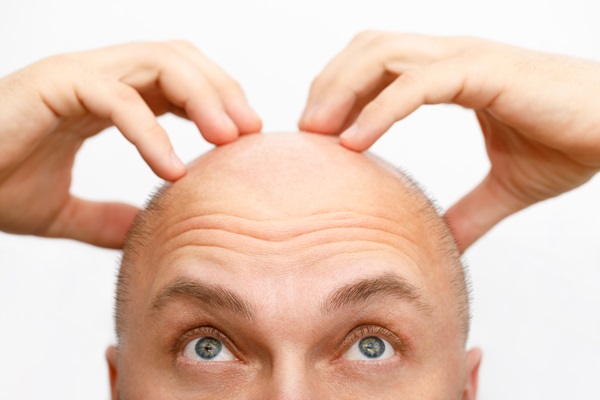What is an ARTAS Hair Transplant?

ARTAS hair transplant is a minimally invasive hair restoration technique that uses artificial intelligence to restore bald spots with hair transplants. The procedure does not leave a linear scar and provides natural-looking results for people with hair loss.
ARTAS hair transplant leads to less bleeding, swelling, and discomfort than manual hair transplant techniques. The procedure is also more precise and faster than conventional hair restoration procedures.
Everything you should know about the ARTAS hair transplant system
ARTAS’s AI-powered system uses 3D imaging technology to examine a patient’s head and create a digital model of it. The AI then uses high-definition stereoscopic vision to determine the best hair follicles in the patient’s scalp and harvest them. A robotic arm precisely does all the harvesting, leaving no scaring behind. It then implants the harvested hairs on bald areas. The high level of precision of the ARTAS system protects the patient's healthy hair while restoring a natural appearance in both the donor and recipient areas.
Some of the benefits of choosing the ARTAS system over traditional hair restoration procedures include:
- It is less invasive: ARTAS transplants are minimally invasive, and no large incisions are made on the patient’s scalp. The robot only accesses the patient's scalp through small holes that are used to plant follicular units. Creating these microsites to access the patient's scalp reduces inflammation and scarring. Conventional hair transplants involve making large incisions to harvest and place hair follicles
- Virtually painless procedure: Local anesthetics are administered before ARTAS transplants, and the AI is designed to move gently without damaging or disrupting nearby tissue
- Less downtime: The recovery period after ARTAS transplants is a lot less than conventional hair transplants. Most patients can return to work within a week of having the procedure
- Permanent results: ARTAS transplants are completed during a single session, and the transplanted hairs stay there permanently
- Natural-looking results: The ARTAS hair restoration system leads to more natural-looking results than conventional transplant techniques since there is no scarring left behind, just new, healthy hairs in the patient’s bald spots
The timeline for results varies for each patient, but new hairs generally start to appear within the first three months after the procedure. The full results of the treatment should be visible in a year.
The ideal candidate
Anyone with bald spots and good donor areas can restore bald areas, thicken their hair, and improve the appearance of their hairline with ARTAS transplants. The main requirement for the procedure is that you have healthy hair in some parts of your scalp.
Patients will also need to be cleared by a physician to ensure they are healthy enough for the transplant procedure. The physician will also assess if the patient has any underlying condition that might impact the outcome of the procedure. A surgeon will then talk to the patient about ways to prepare for the procedure, like:
- Getting a transitional haircut
- Not smoking or drinking
- Stopping the use of blood thinners (patients might have to be cleared by a cardiologist)
- Eating a balanced diet
- Keeping stress levels low
Recovery
Patients should make arrangements for transportation back home after their treatment since they will still be under the influence of the anesthetic used. Patients do not experience significant pain after the procedure, so painkillers are usually not prescribed. Any discomfort experienced can typically be managed with over-the-counter painkillers.
Patients are advised to keep strenuous activities to a minimum for the first few days following the procedure. Most people can return to their regular routine within a week. Fuller natural hairs should start to appear within three months of the procedure, and the patient’s hair should be noticeably thinking within six months. The complete results of the treatment should be on full display in a year.
ARTAS vs. traditional hair transplants
Traditional hair transplants involve removing strips of skin and transplanting hair follicles on them to bald areas. This can be quite painful and takes weeks to heal from. ARTAS hair transplant uses artificial intelligence and 3D imaging technology to pinpoint the best areas to harvest them. As a result, recovering from the ARTAS hair transplant procedure only takes a few days, compared to the weeks it takes to recover from traditional hair transplants. The risk of infection is also much higher with traditional hair transplant treatments.
Patients who opt for ARTAS end up with natural-looking results and no scars, while people who get traditional transplants end up with large scars on their heads.
Restore your hair with ARTAS therapy
Dealing with hair loss? Call or visit our Schaumburg clinic to discuss treatment options with our hair doctor.
Request an appointment here: http://dillonhair.com or call Dillon Hair Restoration at (800) 518-9307 for an appointment in our Schaumburg office.
Check out what others are saying about our services on Yelp: ARTAS Hair Transplant in Schaumburg, IL.
Recent Posts
Hair loss can usher in mixed emotions and damper your self-esteem, whether or not you were expecting the day. Fortunately, hair plugs or grafts can provide patients with a full head of their natural hair. If thinning or balding is something you are experiencing right now, help is available at our Schaumburg office. First, review…
Hair thinning treatments are far more versatile than they get credit for. Our team works closely with each patient to determine the root cause of their thinning tresses and craft an effective treatment plan. Take a closer look at common causes of hair thinning and the various methods we can use to treat it.Many factors…
Hair loss can significantly impact people, affecting their self-confidence and interpersonal relationships. Fortunately, hair grafting, also known as hair transplantation, provides a viable option to restore the natural hairline. If you are still deciding whether to pursue a hair graft, here are three reasons to consider it.Unlike temporary solutions like wigs or hairpieces, a hair…
For those with wrinkled skin, Botox® injections can provide great relief. While it may be a natural sign of aging, the presence of wrinkles can be frustrating to some. Thanks to the scientific research and testing in the 1990s by several dermatologists, Botox® was approved in 2002 by the Food and Drug Administration for cosmetic…


